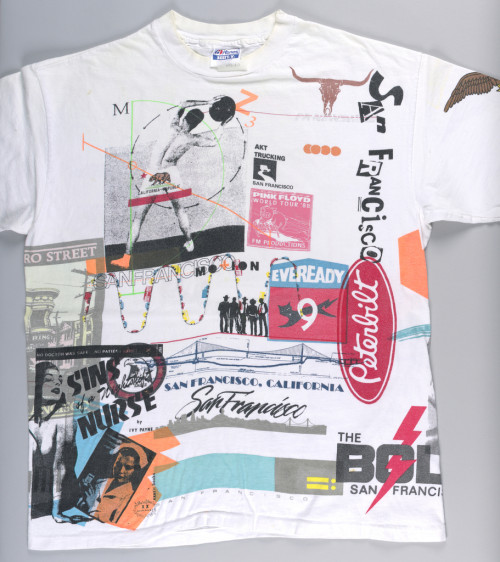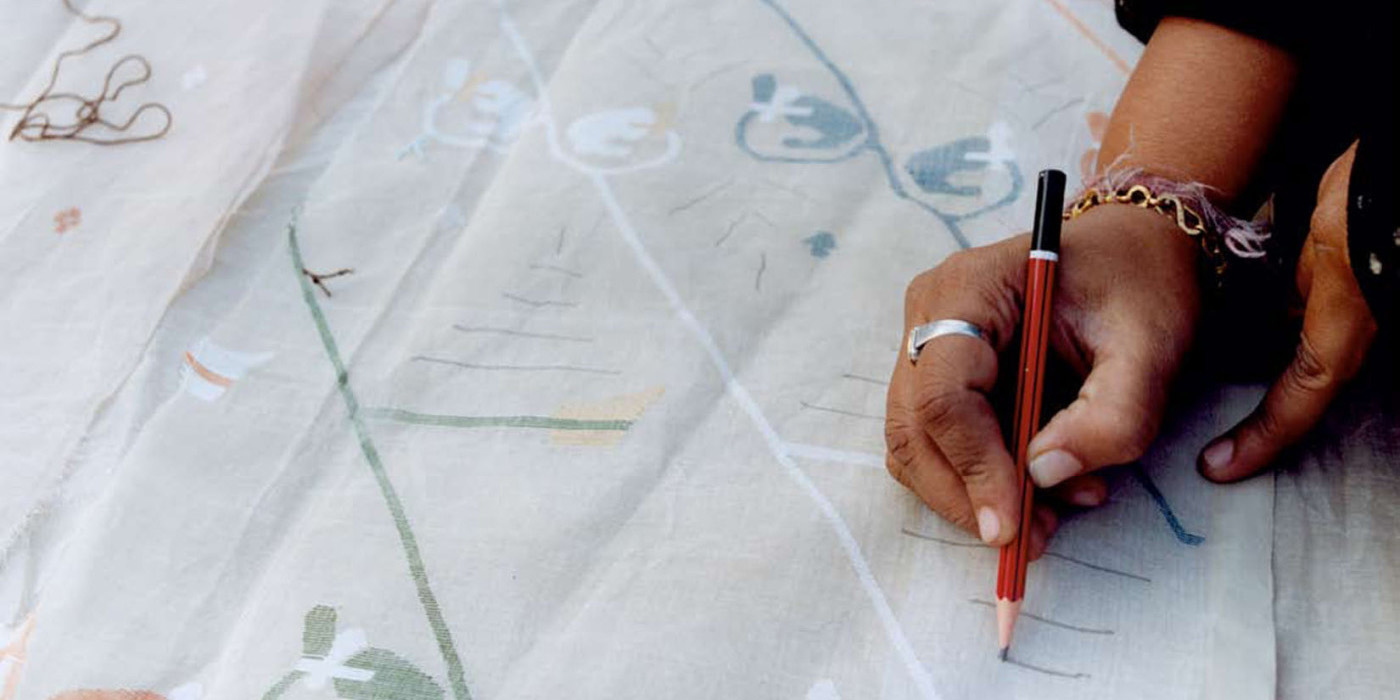
What is this t-shirt’s carbon footprint? T-shirt, 1988; Designed by David Exley (British, 1948 – 1990); 73 x 91.5 cm (28 3/4 x 36 in.); Gift of Eddie Squires; 1992-3-7
The term “carbon footprint” refers to the impact of human activity on the environment based on levels of greenhouse gas (GHG) emissions. The main culprit is carbon dioxide, which is released from burning fossil fuels and accumulates in the atmosphere contributing to global climate change. Without the use of renewable energy, making a 4 oz. cotton t-shirt creates an average of 2.1 kg CO2. This is the equivalent of 2.3 pounds of coal burned or 5 miles driven by an average car, according to the United States Environmental Protection Agency’s GHG Equivalencies Calculator. Since over two billion t-shirts are sold worldwide each year, it is critical to revise our patterns of consumption and production. Beyond cotton farming and clothing manufacturing, consumers also play a big role in greenhouse gas emissions in the ways they care for their clothes by machine washing, tumble-drying and ironing. For instance, switching to cold-water wash would reduce energy consumption up to 90%.
To learn more about how a t-shirt is made, have a look at this brilliant NPR web documentary produced by Planet Money: Planet Money Makes a T-Shirt, The World Behind a T-Shirt in Five Chapters (2013).
About the Author
Magali An Berthon is a textile researcher and designer, focusing in particular on world textile crafts and sustainable fashion. After an MFA in textile design in Paris, she studied textile history at the Fashion Institute of Technology NY on a Fulbright fellowship in 2014. Since June 2015, she is a curatorial fellow at the Textile Department at Cooper Hewitt, Smithsonian Design Museum.
Scraps Stories
This post is part of the blog series Scraps Stories dedicated to exploring sustainable textiles and fashion, in relation to the exhibition Scraps: Fashion, Textiles, and Creative Reuse.
